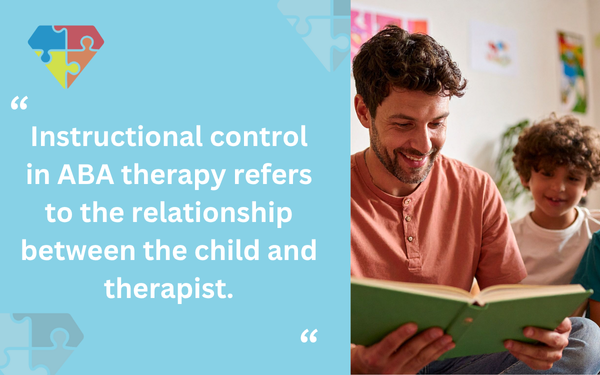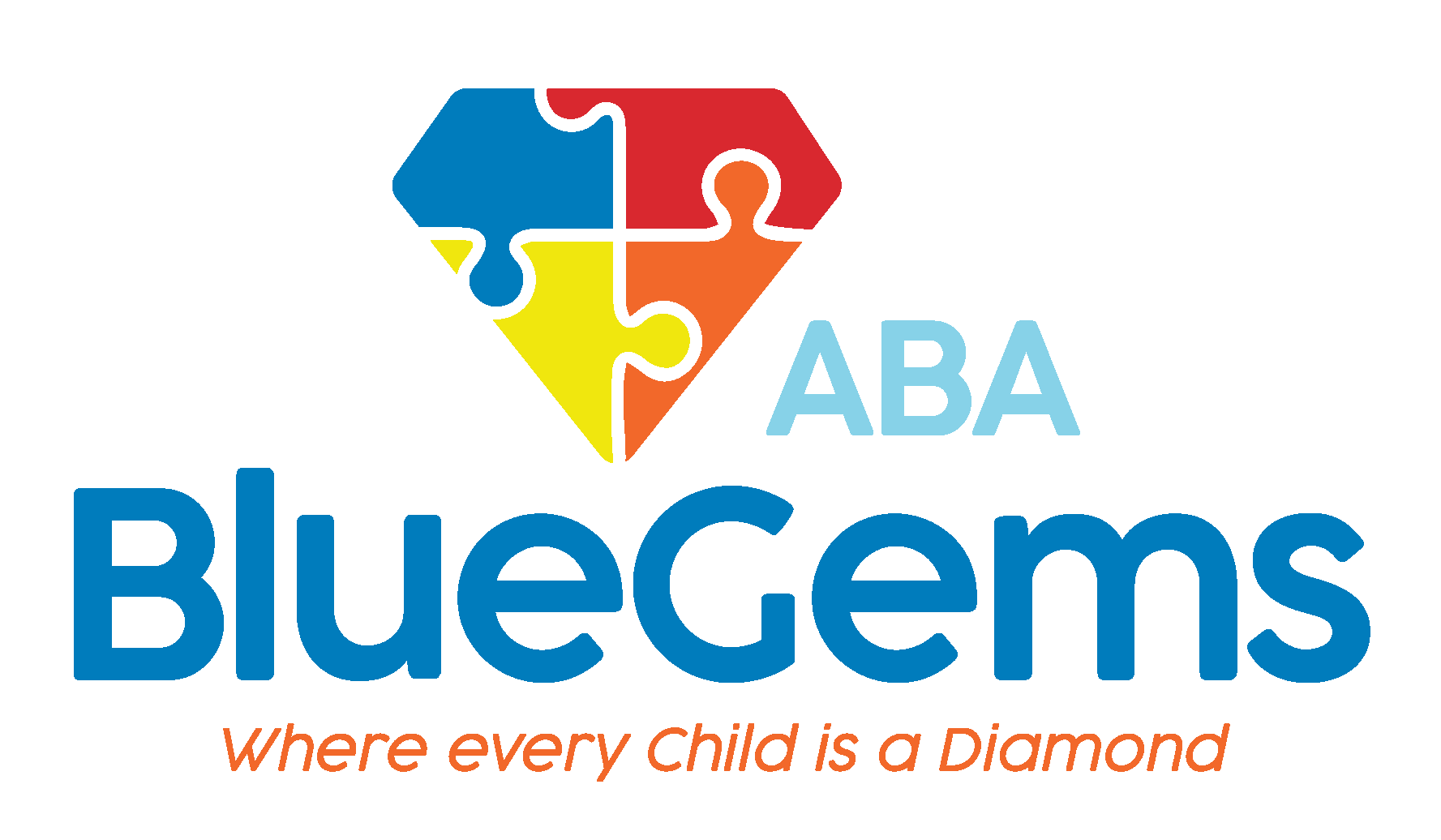Strategies for Regaining Instructional Control
Applied behavior analysis (ABA therapy) has long been considered to be the best treatment option for children with autism spectrum disorder (ASD). Using a wide range of strategies and tools, therapists can help children address deficits with communication and social interactions, build essential life skills, manage their emotions and sensory sensitivities, and modify behaviors.
As a science-based approach to learning and behavior, ABA therapy relies a lot on data collected during sessions that is then thoroughly analyzed and evaluated afterward. This data is used to help craft personalized treatment plans that target each individual child’s unique strengths, challenges and preferences, as well as to monitor patients’ progress toward their goals.
The ultimate success of ABA therapy, though, is predicated on the working relationship between the therapist and the patient, what’s known as instructional control.
In this article, we’ll describe strategies for earning, maintaining and regaining instructional control to ensure the effectiveness of ABA therapy.
Key Takeaways
- Instructional control is foundational to effective ABA therapy and is built on trust and rapport.
- Reinforcers must be consistent, preferred, and immediately delivered to maintain instructional control.
- Play-based activities make learning more engaging and help establish positive therapist-child interactions.
- Trust is earned through consistent follow-through and reinforcing desired behaviors as promised.
Table Of Contents
What is Instructional Control in ABA Therapy?
Instructional control in ABA therapy refers to the relationship between the child and therapist. When instructional control has been established, there’s a solid working relationship between the two people, in which the child follows the lead of the therapist and is motivated to do so.

It’s first established through what is known as pairing, where the child and therapist get on the same page, build a solid rapport and, essentially, enjoy each other’s company to the point where they can work together.
When you have instructional control, it’s easier to gain the cooperation of the patient to help them learn skills and modify behaviors. Keep in mind that in terms of ABA therapy, this refers to the therapist and other professionals gaining instructional control with the child, as well as the parents, caregivers and other family members.
| Strategy | How to Implement | Why It Works | Example |
|---|---|---|---|
| Use of Reinforcers | Identify child-preferred motivators through caregiver feedback and assessments. Apply them consistently during sessions. | Encourages cooperation and maintains engagement by rewarding positive behaviors. | Tokens, verbal praise, or favorite toys after task completion. |
| Play-Based Approach | Incorporate engaging, playful activities into learning and model excitement through tone and gestures. | Children learn better in fun, pressure-free environments. | Pretend play or exaggerated cheering when a skill is attempted. |
| Build Trust | Be reliable. Always deliver on promises made during therapy to reinforce expectations. | Creates a secure and dependable relationship, making the child more open to learning. | Give the requested apple immediately after child points to the apple card. |
| Re-Pairing | Restart pairing by engaging in fun, non-demanding activities to rebuild rapport. | Helps reset the relationship dynamic and create new positive associations. | Playing a child’s favorite game before reintroducing learning tasks. |
The Role of Reinforcers in Regaining Instructional Control
When therapists are looking to gain or regain instructional control, a good first step is to ensure that effective reinforcers are being integrated at the right times, and on a consistent basis.
Positive reinforcement can help a patient feel valued as well as keep them engaged and motivated in ABA therapy. It can come in the form of extra praise, a toy they love or a token they can exchange at a later time for something they like or want to do.
The reinforcer should be tailored to the child’s preferences, based on feedback from parents and caregivers, as well as evaluations and assessments done by the ABA therapy team.
Reinforcers can help when pairing because it signals to the child that the therapist is going to give them something they like and/or want, if they follow their instructions. That’s why it’s important to establish the reinforcement item and schedule from the get-go.
If instructional control has been lost at any point, the therapist should first look at whether they are still integrating positive reinforcement in the same consistent way, and whether the reinforcer is the same. If anything has changed, reverting back to the original reinforcer and schedule — and ensuring consistency in application — can prove effective.
The Role of Play in Regaining Instructional Control
Much of ABA therapy is play-based learning, and a big reason for that is children learn best through play. As such, it’s the therapist’s job to show the child that ABA therapy is fun.
To earn and/or regain instructional control, therapists should focus on creating play-based activities through which learning can take place. In addition, they can have a fun, positive and even over-the-top attitude when doing so.
When therapists show that they’re excited to engage in the activity, especially when the child successfully attempts or completes a task, it helps to engage the child. Therapists can say things such as “That’s amazing” and “Great job,” and also use a positive, upbeat tone of voice.
The Role of Trust in Regaining Instructional Control
Trust is a key aspect of gaining and regaining instructional control. If trust is not at the center of the relationship between the therapist and patient, then it’ll be hard to pair and build rapport.
In terms of ABA therapy, therapists can earn the trust of their patients by following through and doing what they promised they would do. This means being consistent in immediately giving the child what it is that would complete the task.
If the therapist is trying to teach the child to request something to eat by pointing to picture cards, for example, then the therapist should immediately give the child an apple if they point to the apple card. This shows the child that the therapist can be trusted to “hold up their end of the bargain” during learning sessions.
Consistent application of reinforcement schedules also helps to build this trust, as the child will start to learn when they can expect certain things to happen based on what they do.
Blue Gems ABA Builds Great Rapport with All Patients
Instructional control is essential for effective ABA therapy. At the heart of instructional control is building a great rapport and trusting relationship between the therapist and client.
At Blue Gems ABA, our team of experienced therapists work hard to establish great rapport with all our patients. This helps to set a good working relationship that’s based on fun and trust, which leads to more effective interventions for the children with ASD we serve.
To learn more, please contact us today.
Frequently Asked Questions
- What is instructional control in ABA?
It’s the relationship where a child willingly follows the therapist’s lead, built through trust and reinforcement. - How can instructional control be lost?
Inconsistent reinforcement, lack of trust, or using reinforcers that are no longer effective may lead to its loss. - How do reinforcers help with regaining control?
They motivate children to engage and comply, showing that their cooperation leads to preferred outcomes. - Why is play important in ABA therapy?
Play creates a natural, engaging context where learning feels enjoyable, not forced, strengthening the therapist-child bond.




